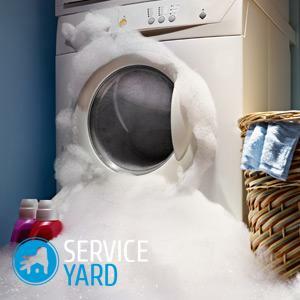
- Why did the washing machine stop closing and what should I do in such a situation?
- Electronics problems and solutions
Modern technology, despite its versatility and technical perfection, often fails. And washing machines are no exception. It happens that the device stops draining the water, does not start the specified program, or simply stops working without completing the washing process. There are such breakages, in which the technology works with small interruptions, but if the hatch does not close, it can not work. Unfortunately, this problem arises quite often and it is necessary to understand why the door in the washing machine does not close, in order to quickly eliminate the cause and implement the planned washing. There are a lot of reasons for this, so let's look at the most common of them and the methods of dealing with them.
to the contents ↑Why did the washing machine stop closing and what should I do in such a situation?
To begin with, you need to check to see if any thing prevents the door from completely closing. If you have not identified such obstacles, then - the malfunction lies much deeper.
Important! These problems can be associated with both mechanical damage and with electronics.
Let's take a closer look at them.
Mechanical Damage and Repair
The washing machine door is most often not closed because of its natural temporary wear or inaccurate operation. It happens that when the door is too much slam, hang on it washed laundry or leaning on it.
And now more details about such breakdowns.
The handle of the
door is broken. Very often the machine stops being blocked due to damage to the handle that closes the hatch.
Important! The fault of this is the improper use of the unit.
To solve the problem, you just need to replace the handle with a new one:
- First you need to remove the front yoke tightening the rubber cuff of the door.
- Then bend the cuff and fix the nuts holding the bolts to fix the hinges.
- The demounted door needs to be put glass up on the floor and unscrew all screws.
- Next, it takes out the glass and accesses the handle connected to the body with a special pin.
- Move it to one side and turn off the handle, spring and tongue.
- Then install a new spring and a tongue.
- Then the pin is returned and the handle is mounted.
The fixing tab or the door hinges
If the closing senses you feel that there is some kind of resistance, it's likely that the reason lies in the displacement of the tab or loops. To understand what is the matter, you need to check the density of fixing the hatch and the level of the door. If you visually see the skew, you will need to adjust or even replace it with new broken loops. To do this is simple:
- First disconnect the loop and the door from the body.
- To disassemble the door, unscrew the screws connecting the two plastic elements between which the glass is located.
- Separate them from each other and change the loop, and then install it in place.
- Next, do the same actions in reverse order.
Important! But if everything is good with the door, it means - the tongue has broken and, most likely, it just stopped getting into the lock. There are many reasons for this, for example, it is possible to shift the rod, which fixes the tongue in the desired position. To fix this problem, you need to disassemble the door and return the stock back.
Plastic guide
If the door in the washing machine does not close partially, namely - no audible click is heard or the hatch is completely locked, the guide blocking the door has failed. To solve the problem, you just need to replace the worn out part by dismantling the door in advance, as indicated above.
to the contents ↑Electronics problems and solutions
If you have not identified any problems with the door of the car, then the problem is clearly inside it, it could be the following.
Failure of the
If the door closes well, but can not be locked, then you need to look for the reason for this in the locking device. In the normal operation of the device, immediately after the required program is started, a signal is sent to the locking device lever, which closes the contact of the main switch. At the same time, the lever remains locked until the machine reaches the end of the process, the door remains closed for a few more minutes.
At high temperatures, the resistance inside the ceramic resistor increases, and because of this, the bimetallic plates are deformed, which leads to the movement of the lever and the closing of the contacts. At the same time, the latch attached to the contact plate is shifted outward and locked in the locked position.
In order for the machine to close properly again, replace the worn out parts.
Blockage of the sunroof lock
Quite often, small debris in the form of threads, plastic and rubber gets into the hole of this device. To identify the problem, you need to carefully inspect it and eliminate blockage.
control module malfunction If you have already excluded all the above-listed faults and the elements responsible for locking the door are working, the reason that the door of the washing machine does not close lies in the failure of the control module. And it happens when the necessary signal stops coming to the board, for example, due to a software malfunction or the contacts tracks are blown.
Important! Also, the problem can arise because of voltage surges.
In such situations it is necessary to conduct a thorough diagnosis of the module, and only after receiving the test results, either repair the machine or reprogram the board.
Important! It is not worth it to fix the problems in the control module, because it is the most important element of this device and its damage can lead to serious financial costs.
Knowing the possible reasons why the door in the washing machine does not close, you will probably be able to find the right one and correct the situation in order to reuse your equipment and free yourself from time-consuming manual washing.



